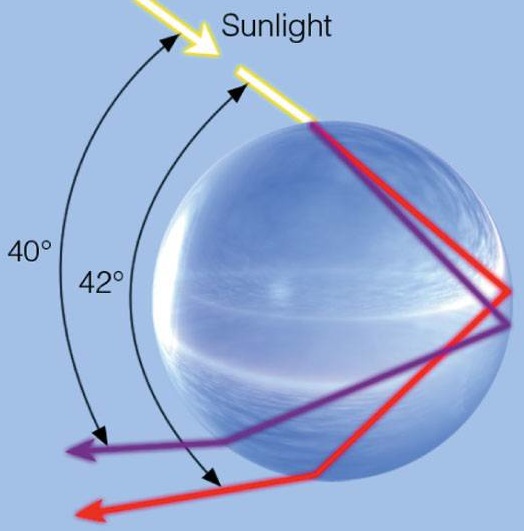Starts with a bang reader Zrinka asks us how rainbows work, and that's a great question for the weekend, since I'm driving up to Portland, OR right now. (The desert is lousy for rainbows when it doesn't rain!) So you've seen something like this before, although maybe yours isn't as famous as Galen Rowell's:

So how do you make one? Well, this works just like light passing through a prism will separate into its colors, because the longer wavelength light travels faster in any medium. So red light has a longer wavelength than purple, and so not only travels faster through glass or water than purple light does, but also bends by a smaller angle than purple light does.
So if the Sun is behind me and there are drops of water in front of me, the sunlight can come in to the raindrops, get reflected off of the back of the water drop, and come back to my eye, except light of different wavelength comes out at different angles. The image below shows you the difference between red light (which comes out at 42 degrees) and purple light (which comes out at 40 degrees):

So that's why red appears on the outside, because it makes an arc of 42 degrees, and purple appears on the inside, with an arc of 40 degrees. Now sometimes, if you look closely on a nice bright day, you'll see a second rainbow outside the first, with the colors reversed! This is what happens when you get a second reflection happening inside some of the drops, and you might see something like this!

So that's how rainbows work; now the next time you see one, you'll know that where it appears is because of your position relative to the sun and the rain, and the shape and arc-size of the rainbow(s) are the same wherever you are!

